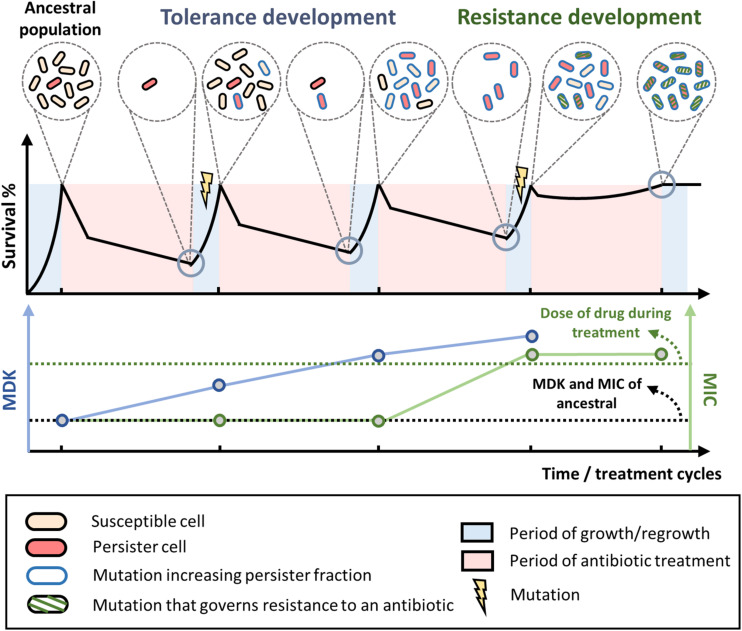FIGURE 1.
Tolerance and resistance development during antibiotic treatment and regrowth. Typical evolution of bacterial populations under repetitive antibiotic treatments. When treated with high doses of bactericidal antibiotics, biphasic killing is observed where the susceptible cells die rapidly while the persisters survive prolonged treatments. After a few treatment and regrowth cycles, mutations that increase tolerance or persistence fraction may occur (blue outline on the cells), leading to higher overall survival of the population and a higher minimum duration of killing (blue line) toward the antibiotic. Over more treatment cycles, the bacteria may eventually attain mutations that govern resistance to the antibiotic (green diagonal stripes on the cells). Once the MIC of the population (green line) exceeds the dose of the antibiotic used during the treatment (green dotted line), the population can grow within the treatment regime and the antibiotic is no longer effective. MIC, minimum inhibitory concentration. MDK, minimum duration of killing.

